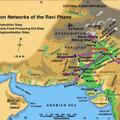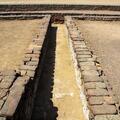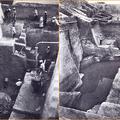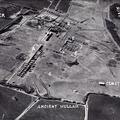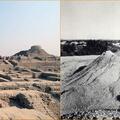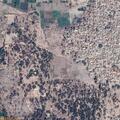Interaction Networks of the Ravi Phase
Sir Mortimer Wheeler noted that "Harappa has produced a hint of an antecedent culture... " The so-called Ravi Phase, an early phase of Indus culture (c. 3300-2800 BCE), elaborated by discoveries in the late 1990's by HARP (the Harappa Archaeological Research Project led by Jonathan Mark Kenoyer, Richard H. Meadow and Rita P. Wright) suggests that even before the the full ancient Indus civilization phase at Harappa, raw materials such as agate, lapis lazuli, steatite, marine shell and copper were transformed into ornaments and tools for local trade.
For more see Around the Indus in 90 Slides 2.

